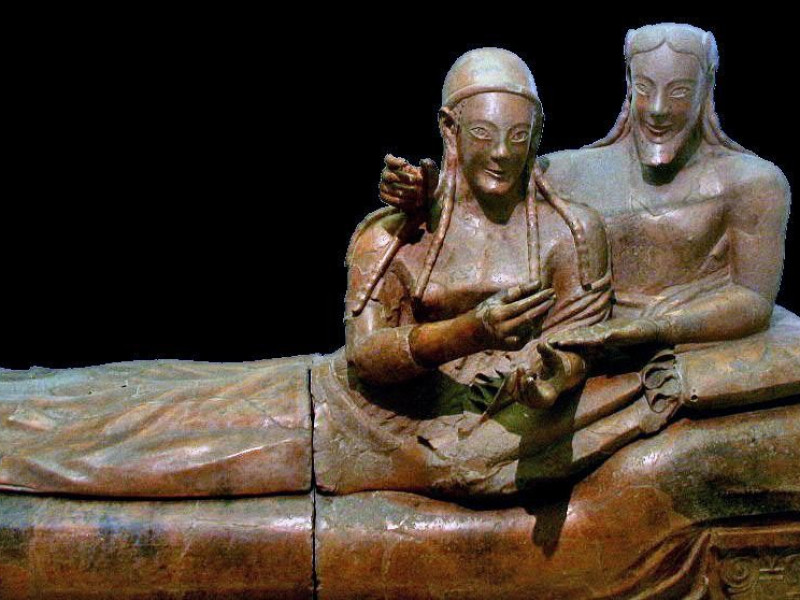Museo Nazionale Etrusco di Villa Giulia
Villa Giulia, built by Pope Julius III between 1550 and 1555, is a splendid example of a Renaissance villa. Stands as a suburban Roman residence, designed by Giorgio Vasari, Jacopo Barozzi da Vignola and Bartolomeo Ammannati. Since 1889 it houses the Museum of Villa Giulia, born to keep pre-Roman antiquities, now the most representative Etruscan museum in the world. The exhibition of the works follows topographical criteria: alongside the great Etruscan centers such as Vulci, Cerveteri and Veio, are also represented pre-Roman minor sites (Agro Falisco, Latium Vetus, Umbria). The Museum boasts collections of great value, such as the nucleus of the seventeenth century Kircherian Museum, materials from Barberini Collections, Pesciotti and, above all, Castellani: ceramics, bronzes and jewelery. The most representative work of the Museum, symbol of Etruscan art in the world, is the famous "Sarcophagus of the Spouses" (Cerveteri, VI century BC). Among other findings, the statue of Apollo (Veio, sixth century BC), the high-relief and gold foils in Etruscan and Phoenician (Pyrgi, fifth century BC), the Apollo of Scasato (Falerii, IV century BC), the Centaur nenfro (Vulci, VI century BC) and the orientalizing complex (Palestrina, seventh century BC).
Info:
From Tuesday to Sunday from 8:30 a.m to 7:30 p.m.


